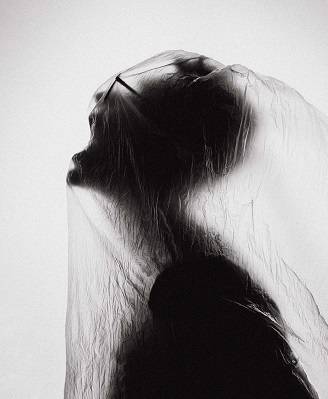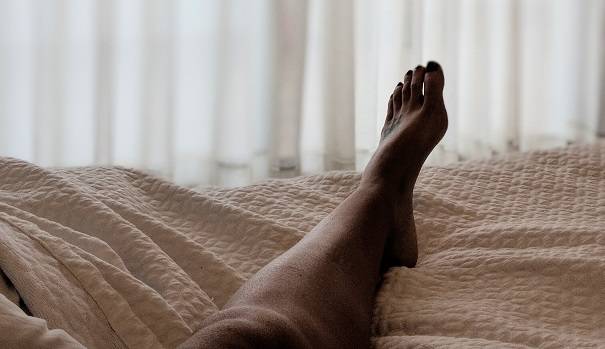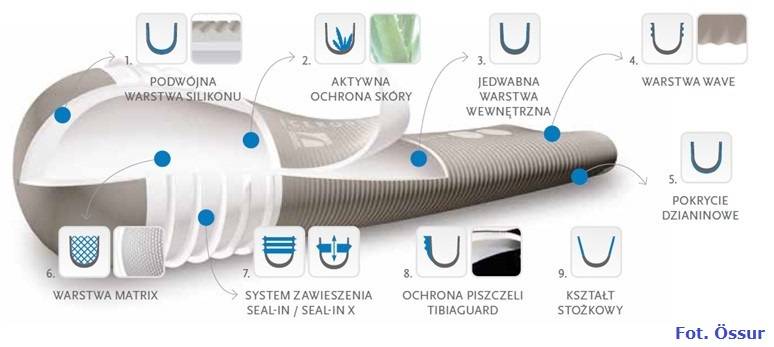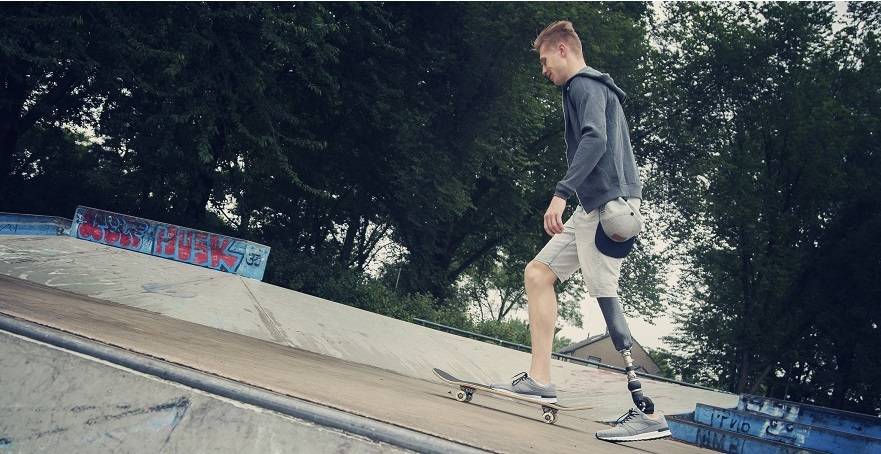Your cart is currently empty!
The infamous title of leader
Every year in Poland, about 30,000 people undergo amputations due to injury, accident, cancer or other, usually chronic, conditions. The numbers are increasing every year, despite the fact that amputation is the most radical treatment and is theoretically used when there is no longer an alternative and the patient’s life is at risk. In practice, treating complications, such as those caused by improperly treated diabetes, is much more expensive than cutting off a limb. Chronic treatment is not adequately funded, the diabetic foot patient brings losses to the hospital. For this reason, as well as through lack of easy access to professional treatment of complications, we are the European leader in terms of the number of amputations.
Amputation surgery
The problem for those who have experienced the need for amputation begins at the stage of waiting for surgery. Medical personnel lack the ability to convey the information that the limb can no longer be saved. There is a lack of psychological care for patients and generally interdisciplinary cooperation between surgeons, orthopedists, physiotherapists and psychologists. In order to perform the procedure, it is necessary to obtain the patient’s informed consent. Only in the case of unconscious patients in a life-threatening condition – the decision is made by a doctor.
Everything is changing
It is impossible to estimate how long it takes to mentally and physically accept the absence of a limb and learn to function without it. At every stage of recovery, support is needed from loved ones and professionals focused on helping amputees. It will also help to talk to a person who has gone through this difficult stage and has returned to everyday life with already recovered energy.
Psychological care
The decision was made – the limb was removed and the patient’s life saved. Is it still the same life? Everyone experiences it differently, but according to a pattern that reflects the difficulties of some patients, first there is a phase of shock and denial – the patient does not accept the loss of a limb. Anger and bitterness emerge. The next stages are related to the surge of thoughts and feelings that were previously not allowed to come to oneself and their gradual taming. When the patient succeeds in confronting difficult thoughts and feelings with reality, the trauma experienced becomes part of himself – he comes back to life, begins a new phase of his story.

Not every amputee patient requires psychological care. Help is recommended especially when the cause of the amputation becomes a psychological burden, associated with feelings of guilt and harm. Such emotions can be managed with therapy.
Rehabilitation
After discharge from the hospital, physiotherapy is needed as soon as possible. Of course, in the early postoperative phase, the most important thing is to heal the wound and strengthen the remaining limbs. The beginning of rehabilitation serves to strengthen muscles and prevent contractures. It is important to implement exercises from the first day after amputation with the goal of gradually getting the patient up and running. The mainstay is exercise to prevent complications related to the patient’s reduced activity, to support lung ventilation – breathing exercises. After that, isometric exercises, anticoagulation exercises can be introduced, and then already attempts at uprighting and movement, up to climbing stairs without assistance. Of course, the pace and intensity of exercise is an individual matter, the most important thing is regular physical activity, preferably under the guidance of a physiotherapist.
Phantom pains
An issue directly related to amputation is phantom pains. They are strongly felt in the amputated, non-existent part of the limb. Such pain can reach varying degrees of intensity, for some it will be just an episode, for others it will be months or even years of suffering. The measures used to support the patient during this difficult period depend on individual needs. It is possible to alleviate the discomfort through various pharmacological agents: anti-inflammatory, anticonvulsants or antidepressants. You can also be assisted by non-invasive massage techniques, electrostimulation or compresses. Sometimes the only option is surgical removal of the neuroblastoma.
Limb in new shape

Immediately after the amputation, swelling appears, when it disappears, you can start molding the stump, because its condition will determine the successful use of the prosthesis. At every stage of rehabilitation, stump hygiene is a key issue. Its washing should begin as soon as the stitches are removed and the wound has healed. It must always be gently wiped dry and observed daily for any complications. Any redness or swelling is a signal for immediate intervention.
Forming the stump is best started with bandaging, and it is important to compress it regularly until the measure is taken for the prosthesis. Most often an elastic bandage is used, but a physiotherapist can choose appropriate stump stockings. Silicone funnels are also successfully used for this purpose. All these methods are designed for the period of daytime activities, night is the time for recovery and rest.
The stump still needs to be hardened, accustomed to the pressure of the prosthesis, before it is prosthesized. From a massage involving stroking, kneading and patting, you eventually have to come into contact with a hard surface – placing the stump on a bench, standing on the healthy limb, while practicing balance.
Adaptation of the prosthesis
Once the surgical wound has healed and the stump has been properly prepared, by molding and hardening, we can proceed with taking measurements for the prosthesis. The decision to wear a prosthesis should be made as soon as possible after the amputation. To walk, you need exercised muscles and efficient brain centers to stimulate their work. After several years in a wheelchair, all these functions will be disrupted. On top of that, contractures may develop that prevent movement in the prosthesis. The process of caring for and rehabilitating a patient who has had a lower limb amputation is long-term and includes preparing the stump for prosthetics, strengthening the entire body and learning to walk – using elbow crutches or a walker, and the use of a prosthesis is only the culmination of these efforts. To begin with, a prosthesis temporary, needed while the stump is being formed. It is also a time for the patient, who has to learn to take care of the stump, the prosthesis and, above all, make walking with it his daily life.
The fitting of prostheses is done by orthopedic facility On the basis of a referral. Every three years there is an opportunity to take advantage of partial funding for the prosthesis. However, the system is not individualized – it does not take into account the patient’s age, needs and activities. Additional financial assistance can be sought from the PFRON or relevant foundations.

Modern dentures – happiness in misfortune
The final prosthesis must be tailored to the patient, taking into account his or her age, activity level and lifestyle. Here, unfortunately, the key issue becomes the amount we are able to pay. A good prosthesis allows you to regain lost mobility and regain independence. Wearing a prosthesis also prevents overloading the limb you have, and does not focus all the tasks that are normally distributed between two legs or arms. The development of prostheses is based on patterns derived from nature, modern prostheses are approaching the ideal. Of course, the most difficult to reproduce is the sensation of stimuli.
Among the available solutions, in terms of knee joints alone, we can choose from motor-driven, microprocessor-controlled models with advanced sensor technology, or basic versions focusing explicitly on stability and safety. When deciding on a prosthetic foot, we also choose solutions from dozens of basic models available.






